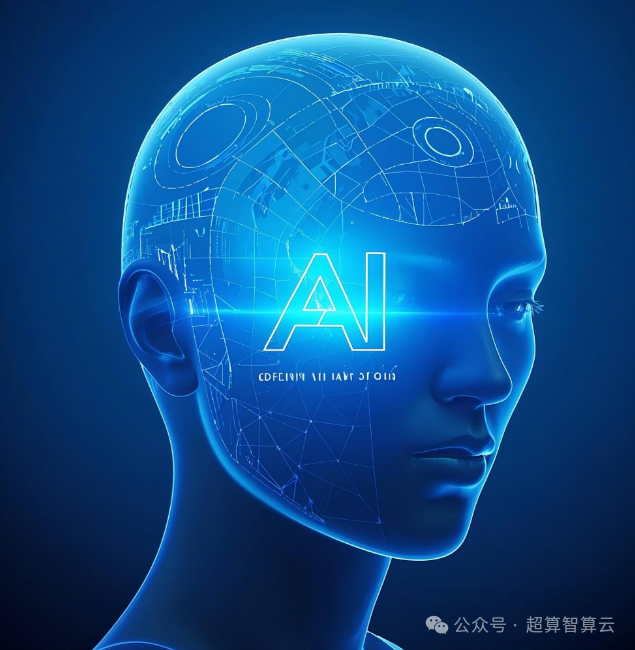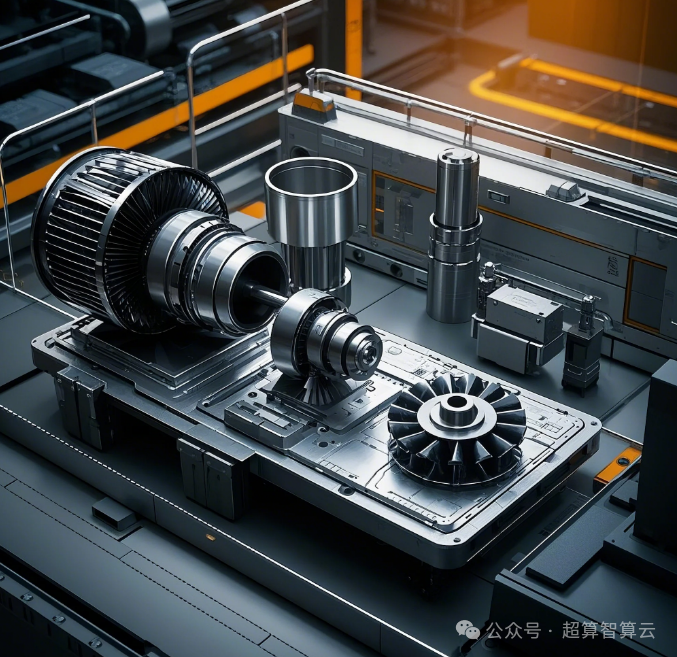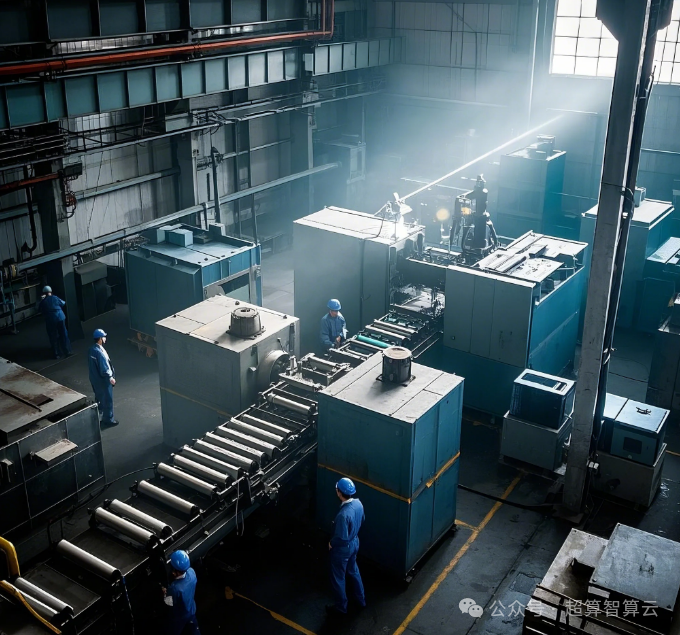Edge AI achieves a closed loop of data “generation-processing-decision” by bringing intelligent computing down to terminal devices, while lightweight technologies become the core means to break through the bottlenecks of computing power, power consumption, and latency. This article systematically analyzes three major technical paths: model compression, hardware acceleration, and software-hardware collaboration, validating the effectiveness of lightweight AI in scenarios such as industrial inspection and smart healthcare, and exploring its disruptive value in privacy protection, energy efficiency, and inclusive intelligence. Follow Replay Share Like Watch MoreSupercomputing Intelligence Cloud
0/0
00:00/01:25Progress bar, 0 percentPlay00:00/01:2501:25Full Screen Playing at Speed 0.5x 0.75x 1.0x 1.5x 2.0x Ultra Clear Smooth
Continue Watching
Edge AI and Lightweight Technologies: Reconstructing the Last Mile of Artificial Intelligence
Reprint, Edge AI and Lightweight Technologies: Reconstructing the Last Mile of Artificial IntelligenceSupercomputing Intelligence CloudAdded to Top StoriesEnter comment Video Details
1. The Paradigm Revolution and Technical Connotation of Edge AI
1. From Centralized to Decentralized: Evolution of AI Deployment Architecture
Cloud Computing Paradigm: Data upload → Cloud computing → Result distribution (high latency, significant privacy risks)
Edge Computing Paradigm: Local processing at terminal/edge nodes (response <10ms, 90% bandwidth savings)
Hybrid Intelligent Architecture: Cloud-edge-end collaborative reasoning (e.g., Tesla Autopilot’s real-time decision-making + cloud model updates)
2. Technical Dimensions of Lightweight Technologies
Algorithm Level: Model parameter quantization, pruning, distillation
Hardware Level: Dedicated AI acceleration chips (TPU/NPU), compute-storage integrated architecture
System Level: Lightweight OS (TensorFlow Lite Micro), compiler optimization (TVM)
3. Rigid Demand Drivers of Edge AI
|
Scenario |
Defects of Traditional Cloud AI |
Advantages of Edge AI |
|
Industrial Quality Inspection |
Millisecond-level latency leads to production line downtime |
Real-time defect detection (99.9% detection rate) |
|
Autonomous Driving |
Network interruptions cause safety incidents |
Local decision-making ensures driving safety |
|
Smart Farming |
Insufficient network coverage in farmland |
Solar-powered devices operate offline |

2. Lightweight Technology System and Cutting-edge Breakthroughs
1. Algorithm Compression: From “Brute Force Models” to “Lean Intelligence”
Quantization:
Method: FP32 → INT8 (Google MobileNetv3 accuracy loss <1%)
Innovation: Dynamic quantization (NVIDIA TensorRT), binary networks (XNOR-Net)
Knowledge Distillation:
Case: Huawei compresses BERT-base to 1/7 size of TinyBERT, maintaining 90% performance
Neural Architecture Search (NAS):
Breakthrough: Google EfficientNet-B0 achieves 77.1% accuracy on ImageNet with only 4M parameters
2. Hardware Acceleration: Dedicated Chips and Energy Efficiency Revolution
Edge Chips:
Qualcomm AI Engine (Hexagon processor + Adreno GPU) supports running Stable Diffusion on mobile
Huawei Ascend 310 achieves 32 TOPS computing power with only 8W power consumption
Compute-in-Memory:
The RRAM chip developed by Tsinghua University achieves an energy efficiency ratio of 35.1 TOPS/W, surpassing GPUs by a thousand times
Reconfigurable Architecture:
Cambricon MLUarch™ dynamically adjusts computing units to adapt to different compressed models
3. Software-Hardware Collaborative Optimization: From Separation to Integration
Compiler Revolution:
Apache TVM automatically optimizes models for specific hardware (4x latency reduction for ARM CPU)
Google MLIR unifies intermediate representation to bridge the algorithm-hardware gap
Cross-Stack Toolchain:
Apple MLX framework unifies model deployment across Mac, iPhone, and Vision Pro

3. Industry Implementation and Scenario Practice
1. Industrial Internet: The Nerve Endings of Smart Manufacturing
Case 1: Siemens Industrial Edge Platform
Deploying lightweight YOLOv5s model on PLC controllers for real-time sorting of defective parts
Energy consumption reduced by 60%, production line throughput increased by 22%
Case 2: DJI Drone Power Line Inspection
Onboard Jetson Nano runs compressed ResNet-18, identifying insulator damage (accuracy 98.3%)
Inspection efficiency increased by 3 times per flight
2. Smart Healthcare: Decentralized Health Monitoring
Wearable Devices:
Apple Watch ECG function runs local arrhythmia detection algorithm (FDA certified)
Huawei Watch D measures blood pressure using a micro airbag, with an error of <3mmHg
Portable Diagnostics:
BGI handheld sequencer incorporates lightweight AI analysis, completing pathogen detection in 30 minutes
3. Consumer Electronics: Restructuring User Experience
Mobile Photography:
Google Pixel 8 runs diffusion models on-device for “magic photo editing”
MediaTek Dimensity 9300 supports terminal LoRA fine-tuning for personalized style generation
AR/VR:
Meta Quest 3 runs a lightweight version of Llama 2 locally for natural voice interaction

4. Challenges and Future Breakthrough Directions
1. Existing Technical Bottlenecks
Accuracy-Efficiency Dilemma: When compressing the MobileViT model to 1MB, ImageNet accuracy drops to 58.3%
Fragmented Adaptation Costs: A vast array of terminal hardware (from MCU to GPU) requires customized deployment
Dynamic Environment Adaptation: Terminal models are difficult to update online (e.g., autonomous driving in extreme weather)
2. Next-Generation Technical Paths
Federated Edge Learning (FEL):
Mi smartphone user data is trained locally, with cloud aggregation generating a global model (privacy protection)
Neuro-Symbolic Hybrid Systems:
DeepMind embeds symbolic rules into lightweight networks to enhance few-shot generalization capabilities
Biologically Inspired Computing:
Intel’s Loihi chip simulates human brain sparse pulses, consuming only 1/1000 of traditional architecture’s power
3. Social Impact and Ethical Considerations
Widening Digital Divide: The cost of edge AI hardware may lead to imbalances in technology accessibility
Environmental Costs: The carbon emissions from chip manufacturing for billions of global terminal devices are surging
Regulatory Vacuum: The black-box nature of edge models may evade algorithm audits

5. Outlook for the Next Decade
1. Trends in Technological Evolution
Atomic-Level Intelligence: MIT develops molecular computing chips that achieve TFLOP computing power in an area of 0.1mm²
Self-Powered Devices: University of California’s flexible photovoltaic-AI chip integrated design, lifetime without charging
Swarm Intelligence Networks: A swarm of over 100,000 drones autonomously executing disaster relief tasks through edge collaboration
2. Predictions for Industrial Transformation
Manufacturing: By 2028, 70% of production line equipment will be equipped with lightweight AI (McKinsey report)
Agriculture: Promotion of edge AI water-saving systems will reduce global agricultural water use by 25%
Healthcare: By 2040, each person will have three health monitoring edge devices (WHO prediction)
3. Recommendations for China’s Development
Standard Leadership: Establish edge AI energy efficiency standards (e.g., power consumption ≤0.1W per TOPS)
Ecological Breakthroughs: Promote a full-stack autonomous ecosystem of RISC-V + lightweight OS + model library
Scenario Innovation: Utilize the scale advantage of new energy vehicles to cultivate benchmarks for vehicle-road-cloud collaboration
Conclusion: Edge AI and lightweight technologies are not only technical optimizations but also a key leap towards the democratization of artificial intelligence. Through the triple helix innovation of algorithms, hardware, and scenarios, it is expected to integrate intelligent computing into the foundation of human life like water, electricity, and gas while protecting privacy and reducing energy consumption. China needs to seize the window of architectural transformation and shift from a follower to a rule-maker.
